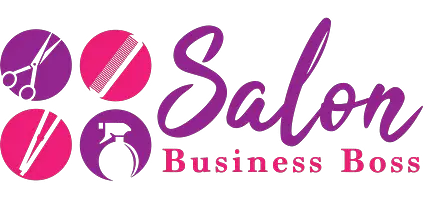Owning your own business can be hard enough when you’re just starting out but knowing how to maintain your own books not only affects your day-to-day decision making, but how you organize your taxes every year. Having a decently organized bookkeeping set up is imperative to making sure you stay afloat. But how do you do that?
How do I keep my books as a self-employed hairdresser?
1. Open your own business bank account.
2. Establish a bookkeeping method.
3. Record all expenses and income and stay on top of your bills.
4. Make a budget for your taxes and learn how to file.
But why is it important to keep a good record? What terms should you know before you start your own bookkeeping? Should you hire an accountant around tax time? Read on to find out more about how to bookkeep for your hairdressing business.
Why is it important to keep a good record annually?
Since you are self-employed, your employer is not sending your tax information to the government—you are. Your taxes are also not taken out automatically from your paycheck, meaning you must pay at least quarterly to your federal, state, and local taxes.
Not only do you need to keep a record of your expenses and income for tax purposes, but you need to understand what your budget is from year in and year out. With detailed information, you can find out how much you need to spend on supplies and where you can cut down.
Keeping a good record can also help you understand where in your business you’re thriving and where you need to put in more work. Knowing what does well and what doesn’t do well in your hairdressing career can help you make decisions on your future—and ultimately help you make more money.
Terms to Understand

While you investigate the process of bookkeeping, there are some terms that you need to understand before you start.
Accounting is analyzing your business financial records to make better business decisions.
Accounts payable is the account in which you pay all other vendors or contractors what you owe, like the business owner if you rent a booth in their salon.
Accounts receivable, on the other hand, is the account where you record what a customer has paid you for your services.
Bookkeeping is the act of recording every transaction in your business.
Expenses, also known as expenditures, is the amount of money you spend running your business. This includes rent, supplies, and anything else you might purchase for your business.
Income, which can also be called revenue, is the money collected from offering a service, like hair styling.
How to Maintain Your Books
Maintaining your books does not have to be complicated. If you follow the tips below, you too can stay organized throughout your year and maximize your profits annually.
1. Open your own business bank account.
It is so much easier to keep your personal accounts and business accounts separate with your own business account. You will not cross your revenue streams, which means you won’t be using your personal money on your business and vice versa. This is also more professional and can help you during tax time—you don’t want overlap, as it will be incredibly hard to stay organized. Having your own business bank account can also help you protect your personal identity. If fraudulent activity is reported, it will be harder to steal your identity if you have two separate accounts.
2. Establish a bookkeeping method.
There are many options for bookkeeping in your business. In this time frame of using credit cards and Venmo, you should consider an accrual bookkeeping method—whether you have received the money or not through a credit card or virtual money sharing service, you record the revenue. This would also include cash payments. The accrual method means you are recording all transactions, regardless of whether you’ve received the payment—making it a very accurate and established way of bookkeeping.
Check out the top five reasons hair salons fail!
3. Record all expenses and income and stay on top of your bills.

This is your most important day to day task. You should be recording every time you spend money on supplies and every time you provide a service. In this step—which lasts all year and you should be doing every day—requires you to maintain your receipts. Not only is it important in case you need to return something or refund someone, but you should have a record of everything for tax season, just in case.
In terms of deciding how to record this information, there are computer programs on the market that can help you make better business decisions according to your business growth. QuickBooks is still one of the most popular on the market, with their Self Employed program open to those independent workers. Xero, FreshBooks, and Wave are also great bookkeeping programs.
If you are more basic and do not need all the bells and whistles, Excel or good, old-fashioned paper can still do the trick. For all of these systems, regardless of what you use, make sure you stay up to date on recording your information and extremely organized—you’ll thank yourself for your organization come tax time. This also includes possibly printing out invoices—free templates exist online if you wish to go this route.
You should also decide if you want to use single-entry or double-entry bookkeeping. Single-entry would be your Excel or handwritten sheets. Essentially, each transaction is entered only once. Double-entry, on the other hand, is how most of the computer programs work—while it’s hard to investigate because you enter the information in simplified screens, double-entry places your transactions into two accounts in the system. This is meant to be used for the accrual accounting method, so you can see any unpaid invoices or bills. If you expect to use credit cards or invoicing systems, you may want to consider using a double-entry system to better maintain what bills have been paid and what are still open.
Within this, make sure you stay on top of paying your bills. Like you want your clients to pay on time, those you owe money to want the same thing—organize a decent payment plan with both your clients and those you work with to make this easier. It could mean deciding on your own point of sale process to add to the convenience.
4. Make a budget for your taxes and learn how to file.
With information about your income, you can start to budget for your taxes. Depending on how much you make, you can determine what your tax bracket is and then budget how much money you should be sending in quarterly. This is a case where having an accountant can be helpful—they can walk you through the process of paying your taxes and help you stay on time and target with the amounts.
Knowing what your tax obligations are can be daunting, but you can find that information on USA.gov. They will help you walk through the process, but it is most easily done by hiring a professional accountant. It is possible to do by yourself, but it can be much easier to hire someone to do it for you—which is another reason to maintain organized records.
Working with an accountant can also help you realize what you can claim on your taxes, meaning what can be deducted. That’s where your receipts come in. If you are purchasing any sort of materials or consumables like shampoo, dyes, towels, etc., those can be written off your taxes. Travel costs can also be deducted, along with any small items purchased during that year like scissors, rollers, straighteners, etc. The rule of thumb is usually if you purchase it for your business, you can write it off your taxes.
The main takeaway of bookkeeping for your hairdressing business is keeping good records and staying organized. Having everything you’ve ever done—any purchases and income you’ve received—only helps you around tax time, can help you create a budget, and gives you easy and accessible information about your annual income.
Related Questions

Do hair stylists have to claim tips on their federal taxes?
Yes, hair stylists must claim tips on their federal taxes and can be penalized if they do not. The Internal Revenue Service has increasingly fought to close this loophole in the tax system, so if you do not claim your tips on your taxes, you could be audited and penalized.
What tax bracket is a hair stylist in?
Your tax bracket is dependent on how much money you bring in. According to ZipRecruiter, the national average for a hair stylist is about $30,000 a year, with the lowest income reported at $14,000 and the highest around $52,000. If you are filing as a single individual, that would put you within either the 12 percent bracket or the 22 percent bracket. Depending on your partner’s income, it may be different if filing jointly.
Looking to start your own Salon? Get the documents you need to get organized and funded here.
Please note: This blog post is for educational purposes only and does not constitute legal advice. Please consult a legal expert to address your specific needs.

About the author. Entrepreneur and Salon Business Fan.
Hi! I am Shawn and I am a happy individual who happens to be an entrepreneur. I have owned several types of businesses in my life from a coffee shop to an import and export business to an online review business plus a few more and now I create online salon business resources for those interested in starting new ventures. It’s demanding work but I love it. I do it for those passionate about their business and their goals. That’s why when I meet a salon business owner, I see myself. I know how hard the struggle is to retain clients, find good employees and keep the business growing all while trying to stay competitive.
That’s why I created Salon Business Boss: I want to help salon business owners like you build a thriving business that brings you endless joy and supports your ideal lifestyle.

